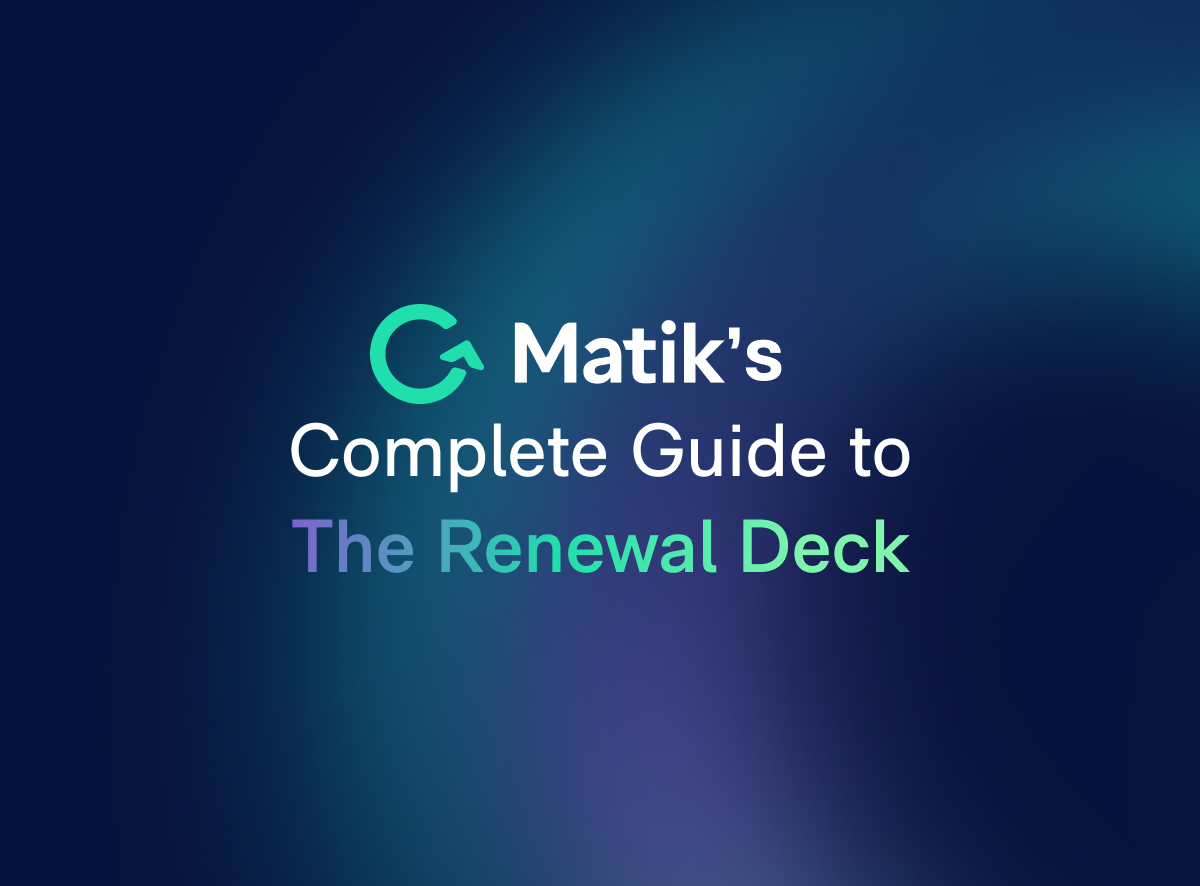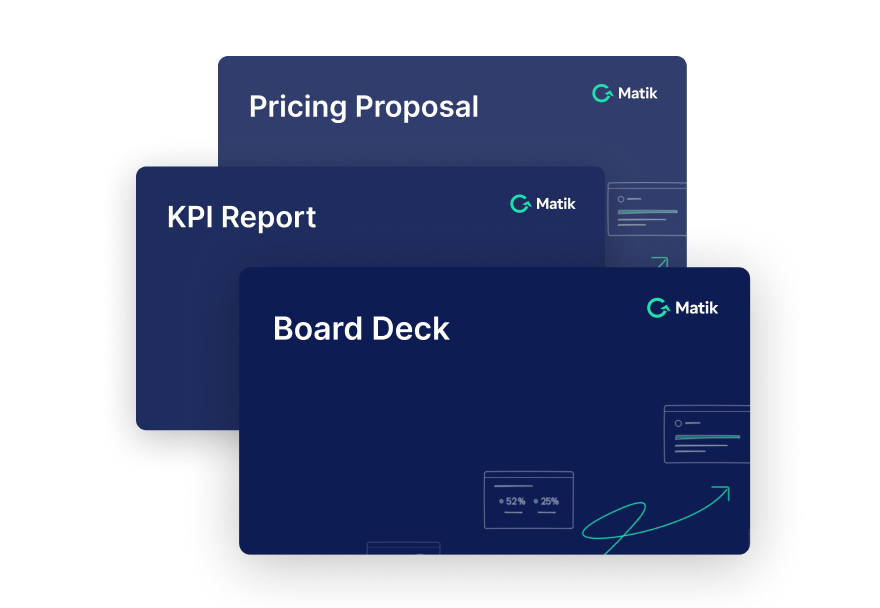Join Our Newsletter
The concept behind a renewal deck is to engage with your customers, show them data that proves how valuable your product has been for them, and address any concerns or questions they might have before it's time for them to renew their subscription. This conversation is your opportunity to remind the customer why they fell in love with your product in the first place, and to explain the additional benefits that will come with continued use.
>> Download our Renewal Deck Template here for slide-by-slide best practices & examples.
Things To Keep In Mind When Building a Renewal Deck
Here are some things to keep in mind when you're building a renewal deck:
- Understand your audience: Tailor the renewal deck to the customer's specific needs and motivations.
- Emphasize the value proposition: Clearly communicate the unique value and benefits your software provides. Highlight how it solves their challenges, improves efficiency, or drives growth. Focus on data that helps them understand outcomes and tangible results.
- Utilize customer success stories: Show examples of how your product has positively impacted other customers. Use case studies or testimonials that the customer can relate to as social proof to reinforce the value of your product.
- Address concerns and objections: Anticipate potential concerns or objections your customers might have during the renewal process. Proactively address these points in the renewal deck by providing explanations, solutions, or evidence.
- Incorporate data and metrics: Data is essential to substantiate the value and impact of your software. Incorporate relevant and compelling metrics that demonstrate measurable outcomes. Use charts, graphs, and other clear data visualizations to make the data easily understandable and impactful.
- Showcase the roadmap and future plans: Let customers know how their voices are being heard by sharing your product roadmap and upcoming features, particularly the ones that align most closely with their needs.
- Clearly outline pricing and renewal options: Be transparent about pricing structure and renewal options available.
- Keep it concise and visually appealing: Use a clean, professional design that aligns with your company branding. Avoid cluttered slides, use streamlined data visualizations, and place visual emphasis on key points.
- Structure the renewal deck effectively: Give an overview of the highlights and agenda first so everyone knows what to expect. This will ensure that everyone in attendance gets the most out of the presentation.
- Iterate over time: A renewal deck is an evolving tool that should be optimized over time — it's not a one-and-done. Adjust the content or structure based on customer feedback to make sure it's as effective as it can be.
By following these steps, you can create a compelling, digestible presentation that increases customer retention and drives renewals. Get our full slide-by-slide template here to make renewal decks easier for your CS team, whether you're starting from scratch or improving your existing process.
---
Turn Industry Knowledge Into Action—Request a Demo!















